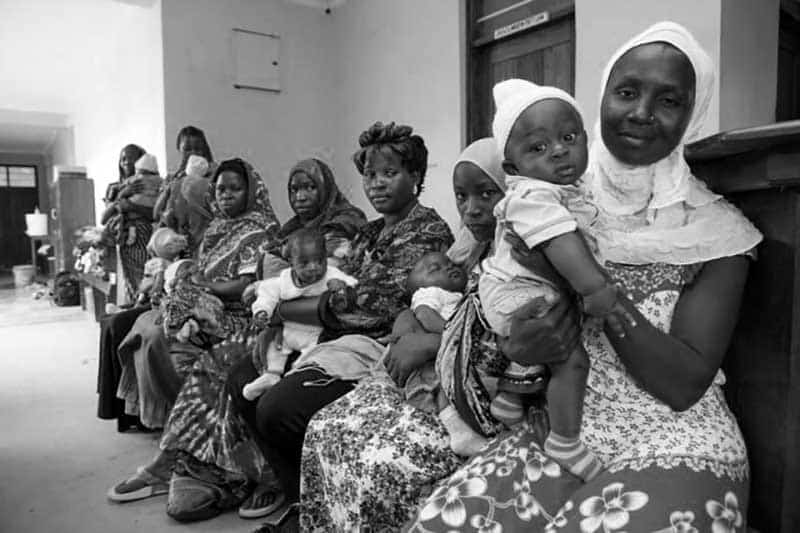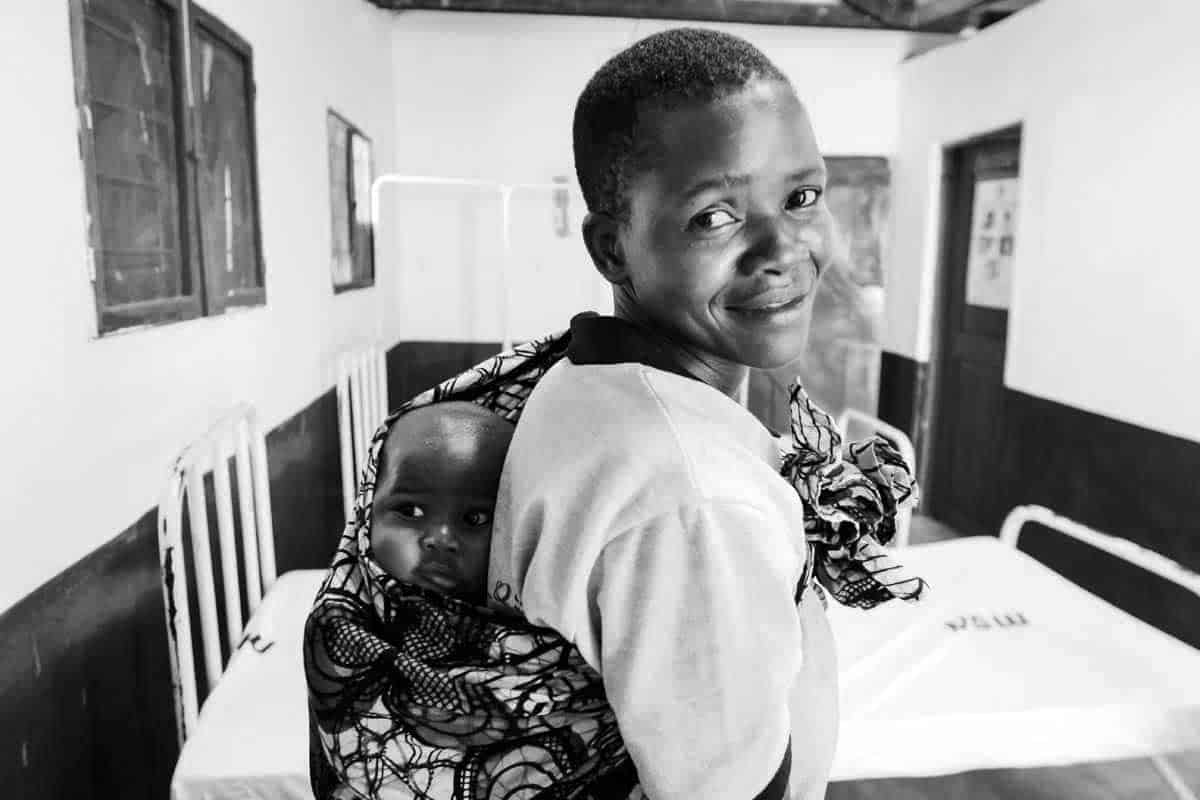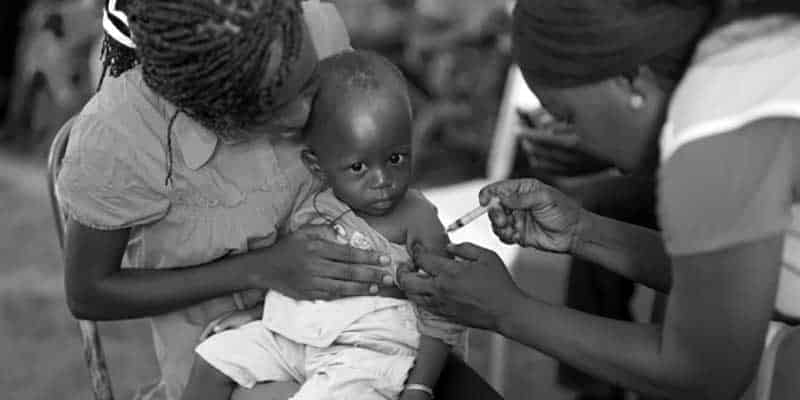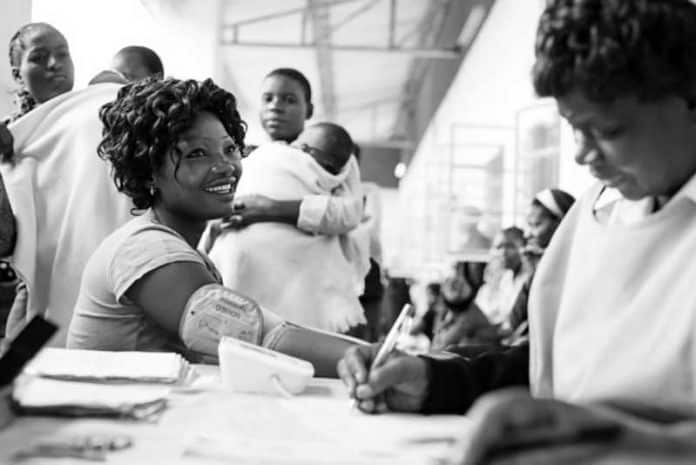The Sector of Health in Tanzania – Maternal and Child Health, Indicators, AIDS, Malaria and More!
In 2010, the maternal death rate in the country was 790 /100,000 births in comparison to 449 and 610.2 recorded in 2008 and 1990 respectively. According to The United Nations Child Mortality Report 2011, a drop was recorded in <5 mortality rate from 155/1000 to 76/100 live births between 1990 and 2010, and a further drop in the neonatal death rate from 40/1000 to 26/1000 live births. The goal of The State of the World’s Midwifery report is to underline ways that the Millennium Development Goals may be attained, specifically Goal 4- To decrease the child mortality rate as well as goal 5- To elevate maternal health in Tanzania. Only 2 midwives are available per 1000 live births; while the probability of mortality during the delivery process is one in 23 women.
Maternal and Status of Child Health in Tanzania
Maternal and Child health are dependent on each other and both significantly contribute to the worldwide burden of high mortality. 289,000 women perish annually as a result of childbirth and pregnancy complications, a further 6.6 million babies under the age of 5 succumb to early childhood diseases and complications during infancy. A high percentage of child and maternal mortality is contributed by Sub-Saharan Africa (SSA), which is inclusive of Tanzania. The UN in collaboration with various other international health organizations in Tanzania incorporated both Child and Maternal mortality into the Millennium Development Goals (MDGs) as goals four and five because these two contributed to a considerable proportion of maternal and child health in Tanzania. In this respect, the country via the ministry of health in Tanzania adopted various strategies and efforts via the Ministry of Health and Social Welfare (MoHSW) to increase child survival and encourage safe motherhood. Similarly, the government has announced child and maternal health amenities to be free in a large number of health facilities in Tanzania to further improve maternal and child public health in Tanzania.

Indicators of Maternal Health in Tanzania
Maternal Mortality Ratio
The major cause of disability and mortality amongst women of child-bearing age in third world countries is complications encountered during pregnancy and childbirth. Maternal mortality only contributes 2.3 % of all deaths. The risk posed with every pregnancy is represented by the maternal mortality ratio (MMR). This ratio is calculated using the number of live births and maternal mortalities. Most underdeveloped countries have little to no data and the national estimate is obtained through modelling. According to approximations done in 2013, the MMR was 7,900 and the total maternal mortalities were 410/100,000 live births. In line with MDG5, Tanzania is expected to achieve the MMR of 230 per 100,000 live births by the year 2015. Cutting back on the number of maternal mortalities is among the major objectives of the poverty reduction strategy and the program to reform the health sector in Tanzania. However, only slow advancement has been made, a situation that is aggravated by the effect of HIV/AIDS.
Antenatal Care
Proper and primary health care in Tanzania is crucial for the development of the fetus and the wellbeing of the mother. Many health issues in Tanzania related to expectant mothers can be curbed, diagnosed and even cured during antenatal clinic visits. WHO advocates for at least 4 visits of antenatal care (ANC). According to The Tanzania Demographic and Health Survey 2010, 98% made a minimum of 1 ANC visit while 43% visited ANC at least four times.
Skilled Birth Deliveries
This is an indicator in the sector of health in Tanzania that is linked to the delivery process; a stage responsible for most maternal mortalities. Maternal deaths mostly arise due to haemorrhage, complications associated with unsafe abortion, hypertension caused by pregnancy, obstructed labour and sepsis. However, the prevalence of these causes of maternal mortalities is likely to vary from one nation to another. As per official estimates, at least 20 women succumb daily to child-related complications and childbirth in Tanzania. The likelihood of death can be dramatically reduced for both the infant and the mother by ensuring access to skilled personnel during labour. In the 2010 Tanzania Demographic and Health Survey, approximately 51% of all deliveries were overseen by skilled attendants, an improvement from the 41% reported in 1999 TDHS. The present nationwide figure is thought to exceed 51%. The major limiting factor to deliveries by skilled personnel is the inadequacy of health workers among other factors. The ratios of doctors: patients and nurses to patients are 1:25,000 and 1:23,000 respectively, in comparison, this ratio is 1:1300 in the US. In May 2014, President Jakaya Kikwete called on Tanzanian health workers to ascertain that both women’s and children’s lives were not at peril during the process of giving birth. Two-thirds of expectant women in Tanzania deliver their babies at home because of the shortage of accessible and enough list of health facilities in Tanzania capable of providing emergency health services in Tanzania that are lifesaving.
PNC (Postnatal Care Coverage)

In Africa, a minimum of 870,000 newborns and 125,000 women perish annually within one week of birth, but this the period when programs and coverage are very minimal across the continuum of health care delivery system in Tanzania. Since almost 50% of maternal mortalities occur after giving birth, midwives or trained Traditional Birth Attendants (TBA) are required to promptly visit all new mothers within the initial 24 to 48 hours following birth. Only 31 % of mothers in Tanzania utilized postnatal care as per TDHS 2010. Providence postnatal care within four hours of delivery ranges from 9 % around the Lake region to approximately 34% around the Southern region of the country. PNC programmes rank among the frailest of all child health in Tanzania and reproductive programmes countrywide as well as Sub-Saharan Africa as a whole. In light of the lack of Post Natal Care guideline standards for health facilities in Tanzania related to this category, the Reproductive and Child Health Section (RCHS) of the Tanzanian MoHSW announced that their development was in progress for country-wide use in 2009.
Use of Modern Family Planning
The conditions of health policy in Tanzania affecting family planning in the country is mixed although optimistic. At the London Summit concerning Family Planning in 2012, Tanzanian president Jakaya Kikwete pointed out the continued attempts to boost family planning. Jakaya highlighted the National Strategy for Growth and Reduction of Poverty (MKUKUTA II) that contains a firm family planning constituent, together with the National Family Planning Costed Implementation Plan of 2010 which aim to achieve a contraceptive incidence goal of having 60% of women before 2015, the plan will need $88.2 million in the period from 2010 to 2015. Like several Sub-Saharan countries, the once fruitful family planning project in Tanzania has slowed considerably, with the contraceptive usage way below levels of health care delivery system in Tanzania required to achieve present demand and objectives. In 2010, 34.4 % of married ladies in Tanzania admitted to using at least one form of contraception, whilst the current methods have reached a 27.4 % prevalence. Some of the factors inhibiting contraceptive usage in the country are reservations about adverse effects, erratic supplies, reluctance to accept long term methods, limited options, inadequate provider skills and knowledge alongside provider bias, little male involvement, lack of proper communication between couples, competing priorities for the limited resources, and the value placed on big families also lead to low acceptance of family planning.
Indicators of Child Health in Tanzania
Under-Five and Infant Mortality Rate
In sub-Saharan Africa, children are about sixteen times more susceptible to death before reaching their fifth birthday than their counterparts from developed regions. Tanzania’s infant mortality rate (IMR) reduced from 10/1000 live births in 1990 to 38/1000 live births in 2012. The <5 mortality rate (U5MR)/ has also reduced significantly from 166 per 1000 live births in 1990 to 54/1000 live births in 2012.
The main cause of maternal mortality and death of children in Tanzania is Malaria. The country is making notable progress in its efforts to reduce child mortality, putting it on track to attain Millenial Development Goal 4 of decreasing child mortality. The major addition to the reduced under-five deaths is improved health system management in Tanzania of Malaria, diarrhoea, Acute Respiratory Infections(ARI), environmental sanitation, better personal hygiene, and preventive, assistive and curative services in health facilities. The mean yearly child mortality reduction rate in Tanzania over the past one and a half-decade was 4.6%, whereas the MDG rate target by the UN is a yearly mean reduction rate of 4.3%.
Vaccination Coverage
Improvement of health services in Tanzania has been made in the process of planning, coverage, community involvement and ownership, effective collection of resources for the Expanded Immunization Program, Enhancements in vaccine health service delivery in Tanzania in terms of safety and introducing underutilized and new vaccines. According to the 2010 DHS in Tanzania, sixty-six per cent of infants were fully immunized at 12 months in the duration of the survey. It also shows that BCG coverage was 95.5%, coverage of the DPT vaccine at 88 %, coverage of Polio (Pol3) was 84.9 per cent and 84.5% of measles coverage. The percentage of measles-vaccinated children increased to 85% from 80% between 2005 and 2010. However, the coverage of vaccination in the country was indicated to be above 90% for all the mentioned vaccines as per WHO in 2012.

| Year | BCG | DTP3 | Pol3 | Measles |
| DHS 2010 | 95.5% | 88.0% | 84.9% | 84.5% |
| WHO 2012 | 99.0% | 92.0% | 90.0% | 97.0% |
In 2012, the Tanzanian government through the MoHWS urged stakeholders and partners in the nation to team up with the National Immunization Coordination Committee that will see to it that all babies in the country are covered.
An Electronic Immunization Register was established, permitting the online acquisition of mothers’ and infants’ medical records, therefore enabling effective operation of vaccination teams set up in remote regions, more so with nomadic communities. Besides, it also aids in coordinating stock numbers and ordering new supplies.
Exclusive Breastfeeding
Statistics of health in Tanzania indicated that by 2010, 46.1% of mothers in Tanzania initiated breastfeeding within an hour after birth. Over 97% of women in the country breastfeed their babies, nonetheless, the prevalence rate of absolute breastfeeding of newborns between 0 to 6 months of age is 50%. Even though the county-wide mean was 50 per cent prevalence, a study focused on the Kilimanjaro region disclosed an incidence of 88.1 in the first month, 65.5 per cent at the third month and only 20.7 % for a baby of 6 months, which is extremely low and with no variance between urban and rural areas. A multivariate study of the 2010 Tanzania DHS data showed that uneducated mothers, young women aged less than 24, employed mothers, mothers in rural areas, mothers who underwent caesarean section and mothers who gave birth at home with the help of relative or traditional midwives were more likely to delay the initiation of breastfeeding within one hour after birth. Some of the risk elements linked to non-exclusive breastfeeding in the initial six months of an infant’s life were living in urban regions and the absence of professional aid at birth.
Child Malnutrition
Malnutrition is associated with approximately 130 child mortalities daily in the country. In reference to 2010 Tanzania DHS, approximately 42% of babies are stunted, sixteen per cent are underweight while a further 5% are wasted. Various strategies have been put in place by Tanzania to elevate the nutrition status of children. Within a year, a substantial decrease in malnutrition was observed. According to 2011 WHO estimates, the prevalence of stunted children <5 years was 34.8 per cent in 2011, 13.6 per cent was underweight in 2011, and 6.6 % were wasted in 2011, while 5.5 per cent were overweight in 2010. Regions like Mbeya, Rukwa and Iringa are amongst the five areas in Tanzania with the most stunting cases despite all of them being regions with high production of food. This is in contrast with the usual belief that improving food production and agriculture leads to an improvement in nutrition.
Under-Five and Neonatal Mortality 2030
The Sustainable Development Goals aims to reduce the figure of under-five children dying under the targets of the sector of health in Tanzania. Despite Tanzania reducing the rates of child mortality, the SDGs still require the country to further lower the death rates under-five and neonatal by 2030.
Sustainable Development Goals (SDGs)
In 2015, SDGs was created as the new development agendum following the expiry of the Millennial Development goals. The third of these sustainable development goals aim to improve wellbeing and promote healthy living for every person regardless of their age.
Sustainable Development Goal 3, Target 3.2
The SDG 3, target 3.2 aims to reduce neonatal deaths to 12/1000 live births and <5 mortality to 25/1000 births before 2030. The world’s <5 mortality rate dropped from, 90 to 46 between 1990 and 2013. Tanzania’s under-five mortality rate has reduced from 167 to 52 within the same period. This ranks it 48th of 194 nations in under-five mortality rates.
HIV/AIDS
Tanzania’s HIV epidemic is generally ‘mature’. 70.5% of the estimated 1.4 million persons infected with HIV/AIDS are aged between 25 and 49 years and 15% are aged between 15 to 24 years. The HIV prevalence in young ladies aged between 15-24 is 3.8%, which is considerably higher than their male counterparts of the similar age group who have a prevalence rate of 2.8%. Over half of the country’s hospital beds have been taken up by HIV patients. HIV/AIDS is the major cause of death in the country, in 2013, the epidemic was responsible for more than 17 per cent of the yearly mortalities. The total HIV casualties decreased from 339 per 100,000 to 159 per 100,000 between 2001 and 2013. Despite this, the prevalence of the disease has risen to 5.3% from 4.3% and the incidence has gradually declined within the same time to 146 per 100,000 from 381 per 100,000.
Malaria
Malaria is principally caused by P.falciparum and is existent all year round. The country’s Malaria cases in < 5-year-olds declined from 18.1% to 9.7% between 2001 and 2009. This is evidenced in the reduced mortality rates of < 5-year-olds from 165 per 100,000 to 49 per 100,000 between 1990 and 2015. This drop in the prevalence of Malaria is also illustrated by the Demographic and Health Survey and Malaria Indicator Survey 2015 -2016 (DHS-MIS 2015-16) having a 14 per cent incidence in 2015 which ranged from Kagera’s 41 per cent prevalence and Geita’s 38 per cent to <1% prevalence in Zanzibar. The prevalence of the disease is also higher in rural areas with 18% compared to 4% in urban areas. The rates are also higher among the poor with 23 per cent and lowest amongst the rich with 1 per cent.

Diarrhoeal Diseases
Six per cent of the country’s death in 2014 were connected to diseases causing diarrhoea. It is, therefore, necessary to reduce diarrhoea-related deaths if the nation is to accomplish the SDGs. Strategies have been put in place in the UNICEF Pneumonia and Diarrhea Report 2016 for the poorer countries to adapt to counter these two fatal diseases.
Lower Respiratory Tract Infections
According to the CDC Tanzania Global Health Facts, lower respiratory tract infections are the second leading cause of death in Tanzania. According to DHS-MIS 2015-16, no changes have been observed in the occurrence of LTRIs over time. However, EPI includes the pentavalent vaccine that immunizes against Haemophilus influenza which causes pneumonia.
Tuberculosis
In 2014, Tuberculosis accounted for 5 per cent of the mortality in Tanzania. TB cases increased between 2001 and 2014, rising from 327 per 100,000 to 236 per 100,000. According to DHS-MIS 2015-16, the rate of detection of TB cases dropped from 68% to 36% within the same period. TB mortalities have since risen from 17 per 100,000 to 36 per 100,000 between 2001 and 2014, with cases in HIV/aids negative patients also occurring.
Non-Communicable Infections
Tanzania has experienced a rise in non-communicable infections which are now among the main causes of mortality. The main ones by prevalence are cancer 5%, stroke and ischemic heart issues of health and disease in Tanzania each with 3%. These diseases further strain the already frail sector of health in Tanzania.
Occupational Health Challenges in Tanzania
Tanzania was formed by the union of Tanganyika mainland (formerly Tanganyika) and Zanzibar. Its approximate population has drastically risen from 12.3 million in 1967 to 44.9 million in 2012. The present working population (15 to 64 years) is approximated to be about 52. 2 per cent. The country’s economy is still largely dependent on agriculture which accounts for about 40% of the GDP. The agricultural industry enlists 76.5 per cent of the country’s workforce, services employ 19.2% and the Industry sector employs 4.3%.
The Perspective of Tanzania’s Occupational Health
Initially, the country operated under the 1950 Factories Ordinances Cap. 297 which catered for occupational safety and measures of health in Tanzania. Through several reform programs, the Occupational Health and Safety Authority was established by The Executive Agency Act Number 30 of 1977 which become operational officially in late 2001. Additionally, the Occupational Safety and Health Act Number 5 was passed giving the body obligatory duties of ensuring the safety, welfare and health of workers in factories as well as other workplaces; to ensure that people other than the workers are protected against safety and health and that arise from or as a result of activities of workers.
Other measures that the nation has implemented include the inclusion of occupational safety and major health issues in Tanzania in other important legislation including The 1979 Tropical Pesticides Research Institute Act, The Industrial and Consumer Chemicals Act of 1985, The 2003 Atomic Energy Act, Pharmaceuticals and Poison Act of 1978 and The 2010 Mining Act and labour and 2004 Employment relation Act Number six with the following inauguration of Labour Court as a division of The Tanzanian High Court.
Another significant stride was made in 2008 when the Workers Compensation Fund was established through the 2008 Workers Compensation Act Number 20. The objectives were to compensate employees for disability or death as a result of injuries or illnesses contracted during employment and to set up community health fund in Tanzania for regulation and administration of employees compensations and other related matters.
The International Labor Organization (ILO) approximates that over 2.3 million persons succumb to work-associated accidents and infections annually and about 317 million calamities and accidents happen yearly because of hazards related to workplaces. The numbers further elaborated that merely 321,000 out of the 2.34 million work-related deaths per year occur because of accidents, the other 2.02 million deaths occur as a result of various work-related illnesses, which translates to a mean of about 5,500 to 6,000 daily deaths.
Occupational Injuries
Each worker requires a safe working environment without any life-threatening risks. This can be achieved where the majority or possibly all hazards of health in Tanzania are pinpointed at the workplace and corrective measures established and followed by all employees. The country’s mining industry is growing fast and employs many workers, both small-scale and conventional. The sector accounts for about 40% country’s exports and was approximated to contribute about 7.7 per cent of the country’s GDP in 2015.
The status of injuries and occupational accidents varies significantly depending on the source. It is approximated that the rate of injuries is 17/1000 workers in the mining sector, while the Industry sector contributes to 10.1 per cent of work-related accidents, about 9.6 per cent of deaths, 12.2 per cent of partial incapacitation and approximately 7.4 per cent of interim disability while the rate of injury is 9.9/1000 workers.
A National Audit Office (NAO) report illustrated that the building/construction industry peaked the death rate at 23.7 per cent followed by mining and Transport with 20.5 and 20.6 respectively. The transport sector presents a life-threatening hazard that continually claims people’s lives especially people who use public transport and motorcyclists. The main problem with this information is reliability and validity as data keeping and reporting health care system in Tanzania are not well organized.
Table 1: Death Rate per sector
| Sector | Total employees | No of Fatal Injuries | Fatality rate (%) |
| Fishing, forestry, agriculture, | 13,890,054 | 16 | 0.12 |
| Transport | 111,671 | 23 | 20.61 |
| Distribution and commerce | 2,486,818 | 12 | 0.48 |
| Building/Construction | 151,690 | 36 | 23.73 |
| Manufacturing | 245,449 | 28 | 11.41 |
| Mining and quarrying | 29,223 | 6 | 20.53 |
| Sum | 16,914,805 | 121 |
Source: National Audit Office report on Performance Audit Report on the Governance of Occupational Safety and Health in Tanzania, 2013.
What are the Challenges Facing Health Sector in Tanzania
The showed data can be disputed by many other factors because the reporting structure of health system in Tanzania is not reliable. A sum of 6,599 workplaces was registered, which is equal to 24 per cent of eligible all workplaces. This presents challenges of health system in Tanzania especially in occupational health and safety authority because increased development in various sectors of the country calls for further investments in these sectors, as it means an increased number of workers are exposed to occupational risks.
For more articles related to health in Tanzania click here!


































